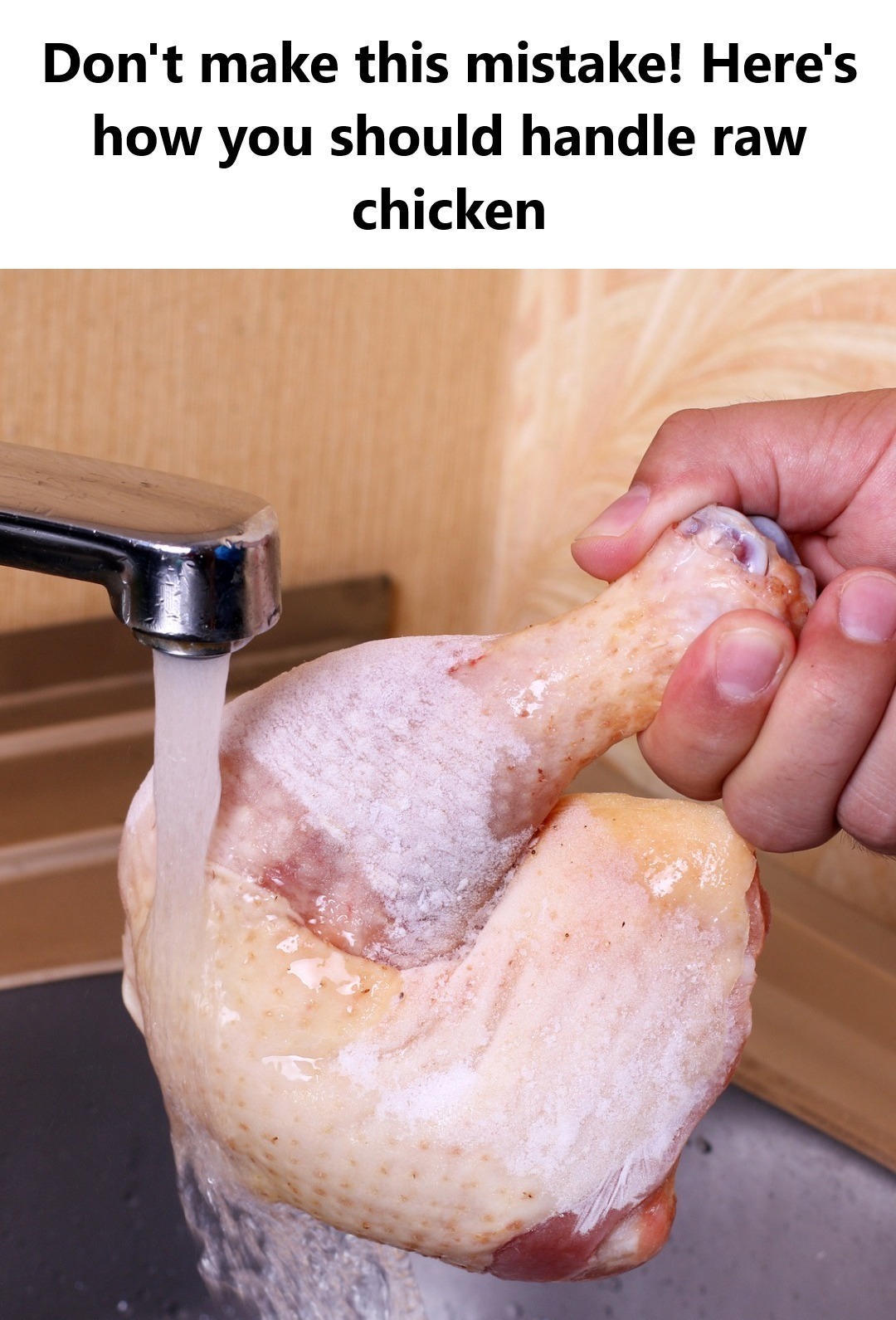ADVERTISEMENT
Why Cooking Kills the Bacteria
While washing raw chicken is not effective at removing bacteria, cooking chicken properly does. The most reliable way to kill harmful bacteria on chicken is by cooking it to a safe internal temperature. The USDA recommends cooking chicken to an internal temperature of 165°F (74°C). At this temperature, both Salmonella and Campylobacter, as well as other harmful pathogens, are killed, ensuring that your chicken is safe to eat.
Using a food thermometer is the most accurate way to check if your chicken has reached this safe temperature. Relying on visual cues like color or texture can be misleading and may result in undercooked chicken, which can still harbor dangerous bacteria.
How to Safely Prepare Raw Chicken
Instead of washing raw chicken, follow these steps for safe preparation:
- Keep Raw Chicken Separate
Always keep raw chicken separate from other foods to avoid cross-contamination. Use a separate cutting board, knife, and plate for raw chicken. If possible, use a color-coded cutting board specifically for raw meat to prevent mixing with foods that won’t be cooked. - Wash Your Hands and Surfaces
After handling raw chicken, always wash your hands with soap and warm water for at least 20 seconds. Clean and sanitize any surfaces, utensils, or tools that came into contact with raw chicken using hot, soapy water. A disinfecting kitchen cleaner or a solution of one tablespoon of bleach mixed with one gallon of water can be used to sanitize countertops and cutting boards. - Don’t Rely on Rinsing
Instead of washing the chicken, simply remove it from its packaging and place it directly into the cooking pan, oven, or grill. There’s no need for any washing or rinsing, as cooking the chicken will be more effective at killing harmful bacteria. - Avoid Spreading Bacteria to Other Foods
Never place cooked chicken on the same plate or surface that held the raw chicken. Always use clean plates and utensils for cooked chicken. - Use a Food Thermometer
Ensure that your chicken is fully cooked by using a food thermometer to check its internal temperature. Stick the thermometer into the thickest part of the chicken to confirm it has reached 165°F (74°C).
Additional Safety Tips for Handling Raw Chicken
In addition to avoiding washing raw chicken, here are a few other important food safety practices for handling chicken:
- Thawing Chicken Safely: Thaw chicken in the refrigerator or using the microwave, never at room temperature. Bacteria multiply rapidly when chicken is left at room temperature, increasing the risk of foodborne illness.
- Store Chicken Properly: Keep raw chicken in a sealed container or on a plate covered with plastic wrap to prevent any juices from dripping onto other foods in the fridge. Store chicken in the coldest part of the refrigerator, ideally at or below 40°F (4°C).
- Cook Promptly: Once thawed, cook chicken within 1-2 days to ensure it remains safe to eat.
Final Thoughts
Washing raw chicken is a common mistake that many home cooks make, but it is one that you should stop doing immediately. Not only does washing raw chicken fail to remove harmful bacteria, but it also increases the risk of cross-contamination, potentially leading to serious foodborne illnesses. The safest way to handle raw chicken is to skip the rinse, keep it separate from other foods, and cook it to the recommended temperature.
By following safe food handling practices, you can ensure that your chicken is cooked properly and free from harmful bacteria, providing a delicious and safe meal for you and your loved ones.
ADVERTISEMENT
ADVERTISEMENT
